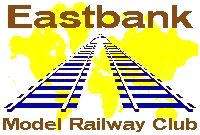
Tri-ang Railways CIWL
Sleeping and Dining Cars
|
|
Tri-ang Railways CIWL |
A Hornby 2018 enigma. The Tri-ang Railways R625 Wagon Lits sleeping car and a Pullman dining car conversion.
Having recently seen a copy of the Hornby 2018 catalogue, it was surprising, nay astounding to observe the illustration on the front cover. This image is of a painting depicting the pre war up Night Ferry passing Folkestone Warren hauled by 855, a Southern Railway Lord Nelson class locomotive Sir Robert Blake. Behind the locomotive, the illustrious blue CIWL Type F Sleeping Cars are prominently illustrated.
With eager anticipation the catalogue was duly scrutinised and sure enough models of the Lord Nelson class locomotives in three different eras were on offer but alas, as for the sleeping cars and the associated fourgons (4 wheel vans), they were conspicuous by their absence.
This is not the first time that Hornby and other manufacturers have disappointed their prospective customers by inserting illustrations on their catalogue covers depicting models that they do not make, well not yet anyway. In the case of the sleeping cars however, once upon a time Hornby's predecessor Tri-ang Railways did actually offer a 00 scale Continental type sleeping car of sorts and even an SNCF Fourgon van in their range. Read on for more on this intriguing saga.
One of the more obscure models produced by Tri-ang Railways was the R625 Compagnie Internationale Des Wagons Lits Et Des Grands Express Europeens Continental (CIWL for short) Sleeping Car. It was introduced in the 1963 catalogue and remained for a further two years. The listed price also remained constant over the three years at 11/6. That's 57½ pence in new type decimal money.
This model would have been a reasonably economic model to produce as it was simply a Series 1 Pullman Parlour Car turned out in CIWL dark blue with a grey roof and the insignia of Wagon Lits and lettered Sleeping Car and Voiture Lits. However, the model contained the interior of a Series 1 Mk. 1 Composite Corridor coach and this is where things start to get a bit bizarre. The Sleeping Car has six passenger windows per side but the compartment interior has seven compartments and an off centre central vestibule. To conceal this irregularity, the windows on the compartment side were made opaque. The model did not really represent any prototype CIWL Sleeping Car and anyway much more realistic but H0 scale models of a Type Y Continental Sleeping Car (P862) and a Type F Night Ferry Sleeping Car (P863) were offered from Jouef and Playcraft.
When the Tri-ang R625 CIWL Sleeping Car was reviewed by the model press at the time, the reviewers were not very complimentary towards the model. They also suggested that it would have been more appropriate to remain with the original Pullman Parlour Car seated interior and brand the car as a Dining Car.
Although Tri-ang Railways did not follow on with this advice about the dining car, producing one is a very simple task. It is just a matter of transposing the original Sleeping Car interior with one from a Series 1 Pullman Parlour Car and removing the Sleeping Car insignia from the coach sides. The opaque window strip is also replaced with a transparent strip. The result is a much more attractive vehicle and although not an accurate scale model, the modified vehicle does feature some of the characteristics of the real thing.
Despite all this negative criticism the Sleeping Cars must have been reasonably popular as around 4,800 models were produced between 1963 and 1964. Although not the most accurate models of their type, they are very much in demand on the used train market today. If evidence is required that the most sought after models are not necessarily the best representations of their prototype, you need look no further that a Tri-ang Railways CIWL Sleeping Car.
Click on photos for a larger image. Use BACK button to return.
For information on the Night Ferry train, see the Night Ferry page.